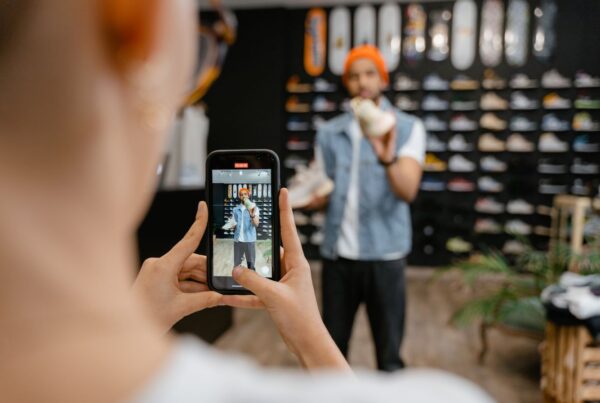Single channel strategies: how to make points of sale smarter?
Digitization has transformed different facets of our daily lives and encouraged a sharp change in use cases. This is especially true in the retail industry where points of sale are key in the overall strategy. Today, 52% of buyers anticipate their purchases by combining on-site and online visits. The buyer’s journey therefore leverages different channels, and physical stores need to turn smarter to attract such buyers.
#1 Switching to data-driven marketing
The very initial step in the digitization of points of sale is to leverage interactions with buyers to collect and process smart data. This is the very purpose of a free Wi-Fi service available at the point of sale level: this service provides retailers with data that, in turn, delivers powerful insights into the behaviors of customers and prospects, and helps boost their overall experience.
Meanwhile, the availability of 4G (and soon-to-come 5G) makes it possible to deliver broadband, in-store online access. Therefore, the mere availability of a Wi-Fi service is not sufficient: to encourage the audience to use that service, brands should couple it with incentives such as discount coupons, personalized advices, contests or goodies. This is key in enabling a data-driven strategy.
Through their Wi-Fi service, retailers have access to metrics and data used for monitoring their activity and better know their visitors and paths. Proximity Wi-Fi therefore helps analyze traffic, spot the most attractive alleys in a shop, or even adapt business hours to visitors’ attendance. Furthermore, performances of offline campaigns can also be assessed by measuring the variation of visitor traffic at the point of sale pursuant to the execution of a campaign. The granularity of the information collected helps identify profiles and continuously fine-tune offerings and strategies.
#2 WI-Fi proximity marketing to engage with loyal customers
According to the Smart shoppers survey conducted by Samsung in April 2018, only 49 % of retailers leverage digital technologies to customize their offerings. Yet, 66% of consumers claim that they expect more promotional information from their favorite brands, while 57% on them crave for more personalized offerings. Personalization drives loyalty. But to achieve it, retailers must deliver offerings based on proximity marketing on their points of sale. Therefore, once the customer connects to the Wi-Fi network of a retail store, ultra-personalized marketing can be implemented to achieve the following:
- Design real-time marketing campaigns and automatically assess their outcome.
- Create personalized interactions with customers through targeted and consistent content.
- Increase the points of contact between the brand and consumers.
- Tap new potential consumers.
- Deliver the right message, at the right location and at the right time, to drive more traffic to physical stores.
- Encourage repeat business by improving retargeting by email, SMS or coupons, to address prospects or customers who have left the point of sale.
- Reach out to 100 % of the Wi-Fi audience.
#3 Wi-Fi for improved visibility and attractiveness
Wi-Fi proximity marketing helps retailers reach out to their audience via targeted advertising and relevant information. At the end of the day, this process improves the overall customer experience and serves as a driver for improved loyalty, sales and brand commitment, with the goal of turning customers into brand advocates. The customer feels understood, satisfied, and becomes a positive communication channel for the brand. He can share his experience in real time, directly from the point of sale. Based, on Wi-Fi proximity marketing, it is possible to design up specific actions that will encourage each consumer to speak, express an opinion, or share a picture on his favorite social networks.
By leveraging data-driven marketing strategies, retailers are in control of their online and offline offerings. Tracking the customer’s omnichannel journey helps deliver targeted actions and messages that are personalized to his profile. Wi-Fi, which was once considered as a cost center for brands, is proving to be a powerful profitability driver.
The challenge for brands is then to connect their points of sale and to step into the era of phygital strategies that will cover all their channels and points of contact with customers.








